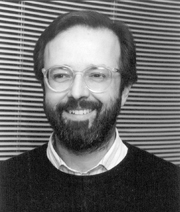Josep Mª Julià
Barcelona, 1954
Josep Maria Julià, born in 1954, graduated in architecture from the ETSAB (School of Architecture of Barcelona) in 1982. He has carried out a great number of projects around Barcelona, in the areas of urban design, building, restoring and industrial design. Julià s first project, the urbanization of the Sòller square, one of the biggest squares in Barcelona, was one of the first urban projects of the new democratic city council: half of it consists of a garden, while the other half is hard-surfaced, a characteristic style of the 80s urban design.
Josep Maria Julià is also...
Josep Maria Julià, born in 1954, graduated in architecture from the ETSAB (School of Architecture of Barcelona) in 1982. He has carried out a great number of projects around Barcelona, in the areas of urban design, building, restoring and industrial design. Julià s first project, the urbanization of the Sòller square, one of the biggest squares in Barcelona, was one of the first urban projects of the new democratic city council: half of it consists of a garden, while the other half is hard-surfaced, a characteristic style of the 80s urban design.
Josep Maria Julià is also responsible for having remodeled the Via Júlia (with Bernardo de Sola, 1986) and the Rambla of Sabadell (with Olga Tarrasó, 1991), and for having built the park of Torrassa in l Hospitalet de Llobregat (with A. Pericó, 1999). He has also restored the subsoil of the Telefónica fountain in Barcelona s Plaça Catalunya (1998), the district school and library El Vapor Vell in Sants (2000), and the old factory Can Surís in Cornellà de Llobregat (2001).
In 1989, Julià was appointed to restore the Reial Monestir de Santa Maria de Pedralbes. During the fourteenth century the queen Elisenda de Montcada provided the monastery with various privileges, one of which was that the monastery would be under the direct protection of the city of Barcelona. In 1991, the monastery was declared Historic and Artistic Monument, and a part of it came to be a part of Barcelona s History Museum. The monastery came to an agreement with the city council: the religious community would rent a part of the monastery in change of its restoration and conservation. In 1989, Julià and Pere López Íñigo started remodeling the nuns dormitories area, in 1995 the lighting of the church, in 2000 the structure consolidation of the nursing area, and in 2002 the cover restoration and the complete restoration of the vitraux. This project was awarded with the Premi Ciutat de Barcelona award in 1991. Part of the building hosts currently the Thyssen-Bornemisza collection.
In parallel with his career as an architect, Julià has also designed various urban and lighting elements. The first one of them, the Nikolson column, designed in 1983 together with Bernardo de Sola and Pedro Barragán, has been seen since then as one of the most universals, being considered nowadays a classic element in urban design. In 1985, Bernardo de Sola and Julià designed the Julieta marker and the Via Júlia tree grids. His Macaya wall mounted luminary, in collaboration with Mª Luisa Aguado, received in 1990 the ADI-FAD silver Delta award in industrial design. With Olga Tarrasó he created in 1991 the light column Elephans and the Sabadell bench. He has also designed the Pedralbes hanging lamp (1995), the Cor Baix wall lamp (1996), the Torrassa column (1998), the Damm furniture for the same firm (2002), and the Taulagran table lamp.
